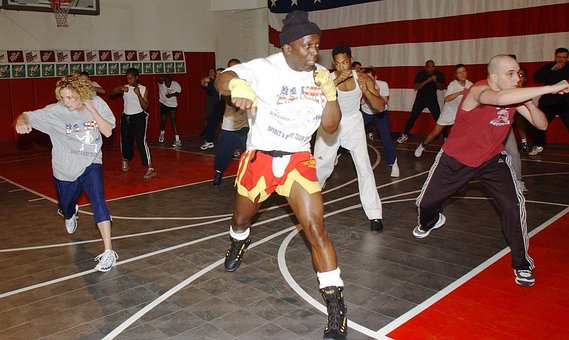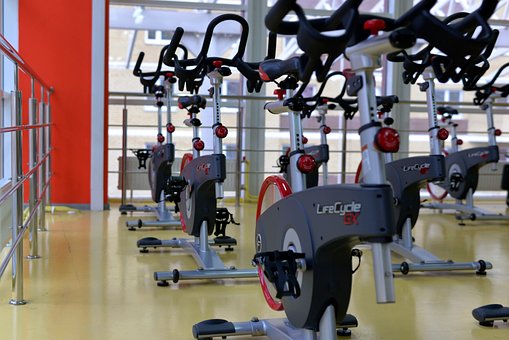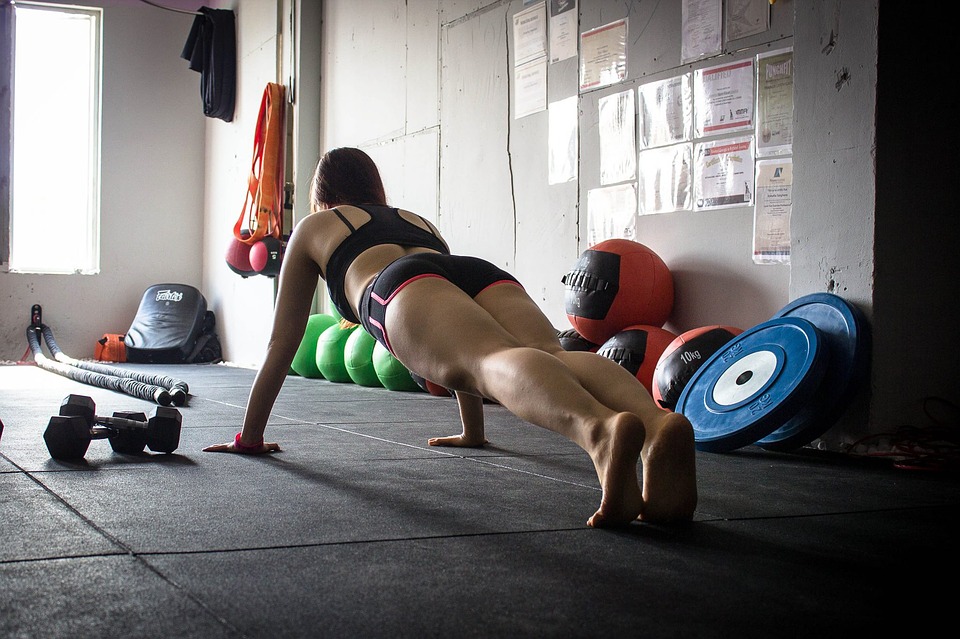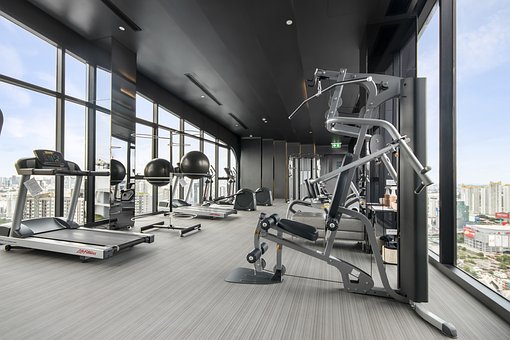
If you’ve taken part in any exercise classes in the past 10 years, it is highly likely that you have come across one of the most popular abbreviations in the fitness world: HIIT. This short phrase covers a variety of exercise activities, such as boxing, strength training, rowing, running, and any mixture of the above.
It may be confusing to understand the diverse kinds of exercise that fall under the label of HIIT, and why these practices have become so favored. This is the information you require when it comes to High-Intensity Interval Training before you visit the gym for your next session.
What Is HIIT?
The abbreviation “HIIT” stands for “High-Intensity Interval Training,” which is why the term “HIIT training” is unnecessary. Do not limit your thoughts to HIIT as merely a type of workout, such as running or weight lifting. Rather than having a specific, set routine, HIIT is a structure that can be used to construct various exercises depending on the training equipment available, the expertise of the group training, and the duration and intensity of the program preferred.
No matter what specific approach to HIIT is used, all programs include intervals of intense work followed by intervals of either rest or some type of low-intensity activity. In order to be the most successful, the highest possible intensity is the necessary component for HIIT. Participants ought to be putting forth their best effort throughout the intervals, then lessening the stress during the rest periods. Rather than engage in LISS activities such as long runs or cycling, some athletes use high-intensity interval training (HIIT) as part of their exercise regimens, since such a vigorous effort can elevate the heart rate.
What’s Most Important for HIIT Workouts
HIIT is a type of exercise method that involves short periods of high-intensity activity separated by short periods of low-intensity exercise. The acronym HIIT stands for high-intensity interval training. Interval Training, or HIIT, is an interesting way to get in a workout in a brief amount of time. Its nature of alternating between vigorous activity and rest periods is considered the most productive means of exercising and burning calories. The HIIT protocol can be used to construct an entire workout plan or can be used for just a few sets in order to finish with extra energy.
No matter what exercise regimen you choose, the key to making HIIT successful lies in how hard you push yourself during the activity. You are putting forth a large amount of effort, commonly to the best of your ability, for a brief amount of time, then taking a rest interval that permits you to regain the strength to exert yourself again. When talking about HIIT, people will often speak of the ratio between work and rest, and there are a few different proportions that you should think about.
- To improve aerobic fitness: intervals would typically involve a work-to-rest ratio of 1:1 or 1:2 (i.e. work for 30 seconds, rest for 30 seconds).
- To train anaerobically (sport-specific training for power and explosiveness): rest intervals are often longer to allow for a more maximal effort, often at least a 1:5 ratio (i.e. work for 15 seconds, rest for 75 seconds).
The Key to HIIT
The key to making HIIT work: The intensity. Don’t take it easy during your HIIT sessions. This protocol allows you to push yourself to the limit, thus you should seize the opportunities presented.
That implies exerting effort, but it doesn’t suggest investing your entire energy. If you have never tried the physical activity before, don’t push yourself to the limit right away. Rather than having periods of exercise that last for 15 to 30 seconds at close to peak capacity, studies have discovered that intervals between 1 to 3 minutes at a more moderate rate of effort (around 80% of maximum), plus up to five minutes of lighter exercise, can be successful for those who are not very active in shedding unwanted pounds.
In some group fitness settings, HIIT and interval training are mistakenly categorized as one and the same. Additionally, some trainers are not properly educated on the distinction between the two. Do not be confused: Real High-Intensity Interval Training necessitates that you are energetic and vigorous during your work segment. Intervals of exercise minus the high-intensity component are common in group exercise classes, where the time spent working out is usually greater than the time spent resting.
The Primary Benefits of HIIT
Fat Loss
A study assessed 13 distinct studies concerning 424 overweight and obese individuals. The research revealed that both High-Intensity Interval Training and conventional moderate-intensity physical activity can diminish body weight and waist size.
Metabolic Rate Is Higher for Hours After
Some researchers have discovered that HIIT can boost metabolism more than jogging and weight lifting over a period of time following the workout. This is known as EPOC (excess post-exercise oxygen consumption) — a term commonly referred to as ‘afterburn.’ It is demonstrated by a heightened rate of oxygen uptake that follows the strenuous physical activity.
Overall Health
High-Intensity Interval Training is not just a means of slimming down. It can improve your overall health, too. The results of an analysis consisting of 50 distinct experiments revealed that HIIT diminishes glucose levels. Studies suggest that overweight and overweight people can gain a reduction in their resting heart rate and blood pressure through further investigation.
Why You Shouldn’t Do HIIT for Every Workout
This exercise program has become so popular that it is often used to refer to any specialized fitness classes that incorporate numerous exercises, various circuits, and a lot of perspiration. The expression “HIIT” is used so frequently that many people who have taken a HIIT class may not be aware of why they’re driving themselves hard to complete the on/off nature of the workout plan.
HIIT is still a top option for boutique gyms and fitness centers since it offers so much in a small amount of time, which is great for people trying to get the best value for their money and instructors and gyms who want to fill out their timetables.
It’s okay if you are enrolled in exercise classes at a gym, but if you rely solely on HIIT exercise sessions then you should think about what you’ve been doing. Aiming to add muscle? High-Intensity Interval Training (HIIT) can be an effective way to switch up one’s workouts, but you won’t achieve the highest level of progress with it. If you are doing more than two or three high-intensity interval training sessions in a week, it is too much. If you constantly put in maximum effort during each workout, you may risk overtraining due to not allowing your body enough time to recuperate. Most likely, you will not put forth the effort that is necessary to get the desired results. Be smart about how and when you use HIIT.
Get Started With These HIIT Workouts For Men
Figuring out the starting point for HIIT workouts can be challenging.
It is essential to bear in mind to endeavor to execute the interval workouts with the most force you are able to retain for the intervals. This guarantees that you take full advantage of interval training.
You can create your own strenuous interval workouts using practically any form of exercise.
To begin, here are some fantastic HIIT routines that will help enhance your health and give you a ripped physique.
Power HIIT Workout For Men
Ensure you have a cloth and liquid nearby for this brief yet rigorous High-Intensity Interval Training routine.
Research suggests that short, high-intensity interval training can have the same caloric expenditure as longer bouts of lower-intensity endurance exercise. This is despite being much shorter in duration.
If you don’t have much time to spare, High-Intensity Interval Training can be a great choice to get an effective and demanding workout. This high-intensity interval training regimen focuses on exercises that will get your heart pumping and work for all the major muscle groups.
You should not begin this strenuous exercise program without warming up first.
Warm up with some light cardio for 3-5 minutes. This may be a simple form of exercise such as running, skipping rope, or doing jumping jacks. Doing anything to get the heart rate and muscles activated.
Set 1
- Burpees with push-ups for 20 seconds, rest for 10 seconds
- Tuck jumps for 20 seconds, rest 10 seconds
- Mountain climbers for 20 seconds, rest 10 seconds
- Spiderman push-ups for 20 seconds, rest for 10 seconds
Repeat the circuit three times. Rest for one minute. Then move on to Set 2.
Set 2
- Alternating jump lunges for 20 seconds, rest for 10 seconds
- Side-to-side push-ups for 20 seconds, rest for 10 seconds
- Jump squats for 20 seconds, rest for 10 seconds
- Tricep dips for 20 seconds, rest for 10 seconds
Repeat the circuit three times. Then cool down for 5-10 minutes
20-Minute Treadmill HIIT Workout
A treadmill can be utilized to accomplish an incredible HIIT workout. You can perform this exercise without a treadmill, outdoors.
The speed at which you go will be based on your fitness level.
A simple rule of thumb is to use the rate of perceived exertion to gauge the intensity level as follows:
RPE Level
- 1: Very light, sitting around watching TV
- 2-3: Light activity: can maintain for several hours. Can breathe and talk without any difficulty
- 4-6: Moderate Activity: Breathing a little more heavily. Can have short conversations
- 7-8: Vigorous Activity: Becoming uncomfortable, can speak a few words at a time
- 9: Very Hard Activity: Can barely breathe, difficult to even speak one word
- 10: Max Effort: Feels almost impossible to maintain for more than a few seconds. Completely out of breath
Begin walking or jogging at a slow and comfortable speed, around a perceived rate of exertion of 3 to 4. Raise the incline to around 1-2%, so that by the end of the first five minutes you have an exertion level of 6.
Run at a faster pace while keeping the incline at the same level until your rate of perceived exertion is around 7.
Between 7 and 9 o’clock, increase the gradient of the treadmill by 1-2% while maintaining the same speed, pushing yourself to an RPE of 8.
From 9:00 AM to 12:00 PM, cut down your pace but keep the slope, expending an effort level rated at 7.
From midday to 3 o’clock, accelerate your running once more, and if possible, raise the ramp. This will be the hardest part of the workout. Attempt to reach a rating of perceived exertion of nine by the time this 3-minute period is finished.
15:00-20:00: Time to cool down! Gradually reduce your speed and incline. Finish at an RPE 3-4.
This is a pure cardio high-intensity interval workout. Although a twenty-minute span may not seem extensive, when you give it your all during intense HIIT workouts, you will reap incredible physical advantages.
Rowing Machine Interval Workout
If you can get your hands on a rowing machine, it’s a fantastic way to engage in a high-intensity interval exercise program.
Using rowing machines is a great way to engage in a cardiovascular session while gaining a powerful workout for your upper and lower body. Begin with a five-minute session at a relatively slow speed with a feeling of work intensity of about 3-4 on a scale of 1-10.
You can experiment a bit with the gaps.
Exercise 1: Row quickly and with intensity for 40 seconds; then take it easy for 20 seconds and row at a slower and more relaxed pace. Repeat this 10-15 times.
Exercise 2: Row at an intensity level of 6 to 7 on a scale of 10 for four minutes, then transition to a lower intensity level of 3 to 4 for two minutes. Repeat this 3-4 times.
Take a break: Go for a row at a relaxed rate for 5 minutes.
Dumbbell HIIT Workout
You can make use of a set of dumbbells to work out your muscles using HIIT no matter where you are.
Do each exercise for a duration of 30 seconds, then transition to the successive one. Rest for one minute, then repeat three times.
- Bicep curls
- Tricep kickbacks
- Shoulder press
- Lawnmower rows
- Squats
Studies have shown that just one hour of strength training per week can drastically reduce the risks of cardiovascular illnesses and death.
Incorporating weights into your interval exercises can maximize your output. High-intensity interval training is a great way to increase your heart rate and develop muscle mass in a brief time span.
Choose a weight that you can continue to lift over the 30-second period while keeping the correct posture.
Incorporate some of these HIIT exercises into your routine over the next few weeks to see improvements in your physical conditioning and shape up with HIIT!














